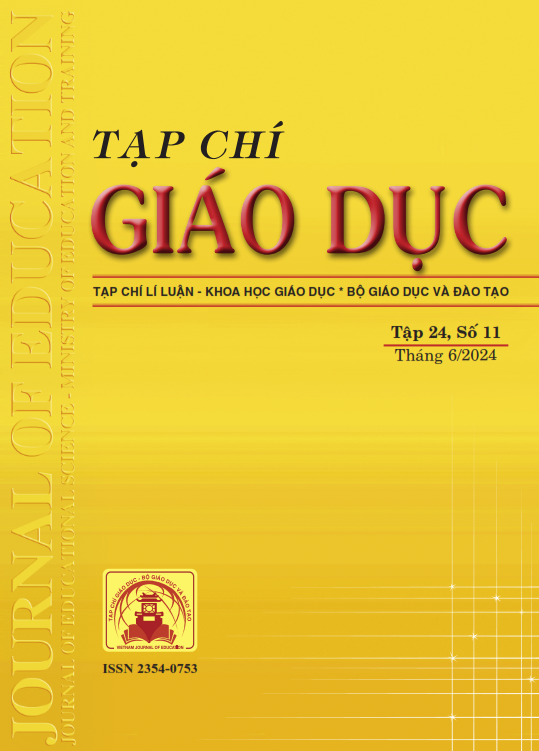Dạy học môn toán theo định hướng giáo dục STEM dựa trên quy trình kĩ thuật: Một nghiên cứu thực nghiệm
Tóm tắt
Teaching in the direction of STEM education provides students with essential skills in the 21st century such as: problem solving skills, critical thinking, collaboration skills, communication skills, etc. STEM education has been receiving growing attention and research from numerous scientists with initial positive results when applied in practice. The study presents a technical process to implement STEM education and applies this process in experimental teaching on the topic “Designing a ferris wheel” for 9th grade students at Sao Nam Middle School, Hai Chau district, Da Nang City. Qualitative methods were used to analyze the data. The results of the study show that the students had an understanding of technology and basic engineering principles, as well as the ability to apply math and science knowledge to the STEM topic - ferris wheel design.
Tài liệu tham khảo
Bộ GD-ĐT (2018). Chương trình giáo dục phổ thông - Chương trình tổng thể (ban hành kèm theo Thông tư số 32/2018/TT-BGDĐT ngày 26/12/2018 của Bộ trưởng Bộ GD-ĐT).
Clough, M. P., & Olson, J. K. (2016). Final commentary: Connecting science and engineering practices: A cautionary perspective. In L. A. Annetta, & J. Minogue (Eds.). Connecting science and engineering education practices in meaningful ways: Building bridges (pp. 373-385).
Basel, Switzerland: Springer International Publishing. English, L. D. (2016). STEM education K-12: Perspectives on integration. International Journal of STEM Education, 3(3).
Fan, S., & Yu, K. (2017). How an integrative STEM curriculum can benefit students in engineering design practices. International Journal of Technology and Design Education, 27, 107-129.
Holmlund, T., Lesseig, K., & Slavit, D. (2018). Making sense of “STEM education” in K-12. International Journal of STEM Education, 5, 32.
Lawrenz, F., Gravemeijer, K., & Stephan, M. (2017). Introduction to this Special Issue. International Journal of Science and Mathematics Education, 15(Suppl 1), S1-S4.
Maass, K., Geiger, V., Ariza, M. R., & Goos, M. (2019). The role of mathematics in interdisciplinary STEM education. ZDM, 51(6), 869-884. https://doi.org/10.1007/s11858-019-01100-5
McKenna, A. F. (2014). Adaptive expertise and knowledge fluency in design and innovation. In A. Johri & B. M. Olds (Eds.), Cambridge handbook of engineering education research (pp. 227-242). New York, NY: Cambridge University Press.
Roehrig, G. H., Moore, T. J., Wang, H. H., & Park, M. S. (2012). Is adding the E enough?: investigating the Impact of K-12 engineering standards on the implementation of STEM Integration. School of Engineering Education Faculty Publications, 1(2), 1-28.
Shaughnessy, M. (2013). By way of introduction: Mathematics in a STEM context. Mathematics Teaching in the Middle school, 18(6), 324.
Treacy, P., & O’Donoghue, J. (2014). Authentic integration: A model for integrating mathematics and science in the classroom. International Journal of Mathematical Education in Science and Technology, 45(5), 703-718.
Tải xuống
Đã Xuất bản
Cách trích dẫn
Số
Chuyên mục
Giấy phép

Tác phẩm này được cấp phép theo Ghi nhận tác giả của Creative Commons Giấy phép quốc tế 4.0 .












